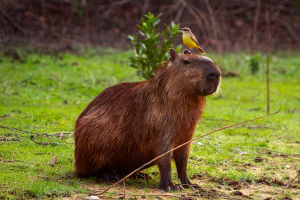We've all seen butterflies fluttering through a garden, but once in a while, they rise surprisingly high into the sky. It's not just a short hop—they can actually fly over trees, rooftops, and even small hills.
So, why do butterflies fly so high? What helps their tiny wings carry them that far? Today, let's explore this curious and beautiful behavior together.
Light wings, big lift
One key reason butterflies can fly high is their lightweight bodies and large wings. Their wings are made of thin layers covered with tiny scales, making them super light and aerodynamic. This allows even a small gust of wind to lift them up. Their large wings give them more surface area, which helps them glide upwards without using much energy. For butterflies, it's all about balance between body size and wing design.
Warm air helps them rise
Butterflies are great at using their environment. During sunny days, warm air rises from the ground, creating something called "thermals." These are invisible upward air currents. Butterflies often ride these thermals to gain height with little effort. It's almost like hopping on an invisible elevator in the sky. That's why we often see butterflies flying higher in the late morning or early afternoon when the sun is strongest.
They travel farther than we think
Some butterflies don't just fly high—they travel long distances too. A great example is the Monarch butterfly, which migrates thousands of kilometers between North America and Mexico. To complete this incredible journey, they often need to fly high above the ground to catch favorable winds and avoid obstacles like forests or buildings. So, flying high helps them save energy and stay safe on their journey.
High flying means fewer threats
Flying higher also helps butterflies avoid ground-level dangers. Predators like birds, lizards, or even cats usually lurk closer to the ground. When butterflies fly high, they're harder to catch. Plus, being up in the air gives them a better view of their surroundings. They can spot flowers, other butterflies, or landing spots more easily from above.
They're searching for food or mates
Butterflies aren't just flying high for fun. Often, they're on a mission—looking for flowers to feed from or searching for a mate. From high up, they can spot colorful flower patches or movement that signals another butterfly. By flying higher, they widen their view and improve their chances of finding what they need. It's a smart way to make the most of their time and energy.
Not all butterflies fly the same
It's important to know that not every butterfly flies high. Different species have different flying styles. Some stay low near flowers and bushes, while others are strong fliers that soar above treetops. For example, Swallowtails and Monarchs are known for their strong, high flights. Smaller butterflies like the Cabbage White usually stay closer to the ground. Their flying habits depend on their size, wing shape, and what they need each day.
What we can learn from butterflies?
Butterflies remind us that even small creatures can go far with the right tools and strategy. Their ability to use nature—wind, warmth, and vision—to travel long distances shows how connected life is to the environment. We can also learn from how they adapt and find their way by being observant and using what's around us.
Next time, look up!
Next time you see a butterfly, don't just watch it flutter nearby—look up. You might spot one gliding way above your head, carried by the wind and chasing the sunlight. Nature is full of small surprises like this. Have you ever seen a butterfly flying high in the sky? What do you think it was doing?
Let us know your thoughts, or better yet, take a quiet moment outside and look up—you never know what you'll see!


